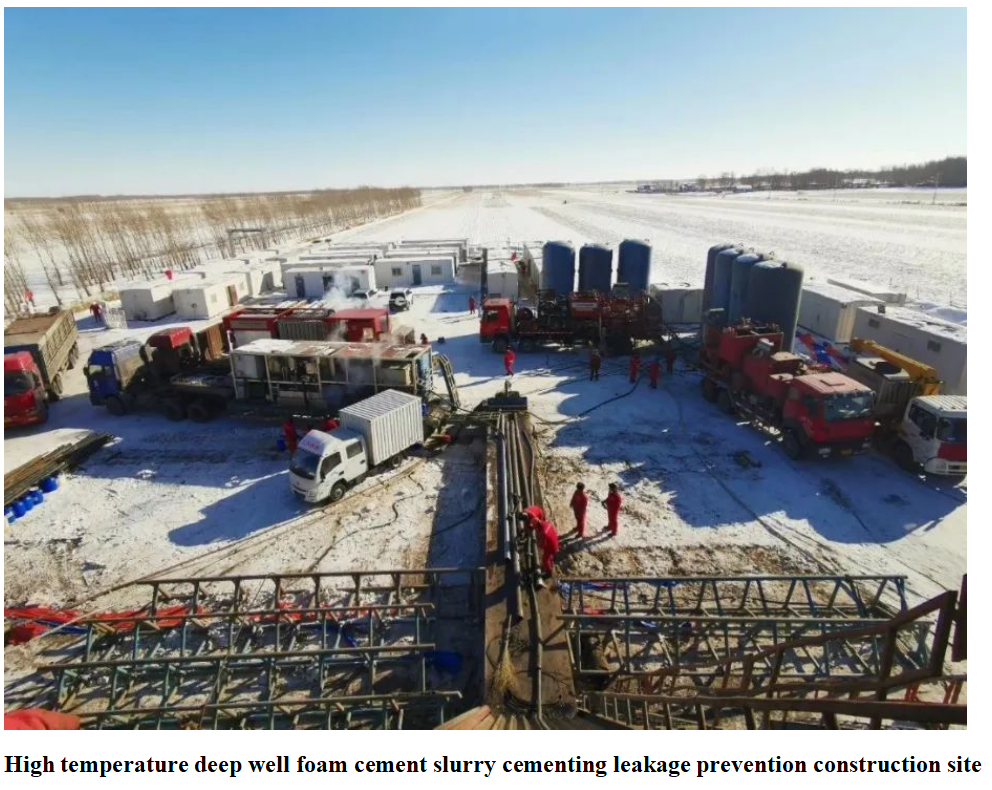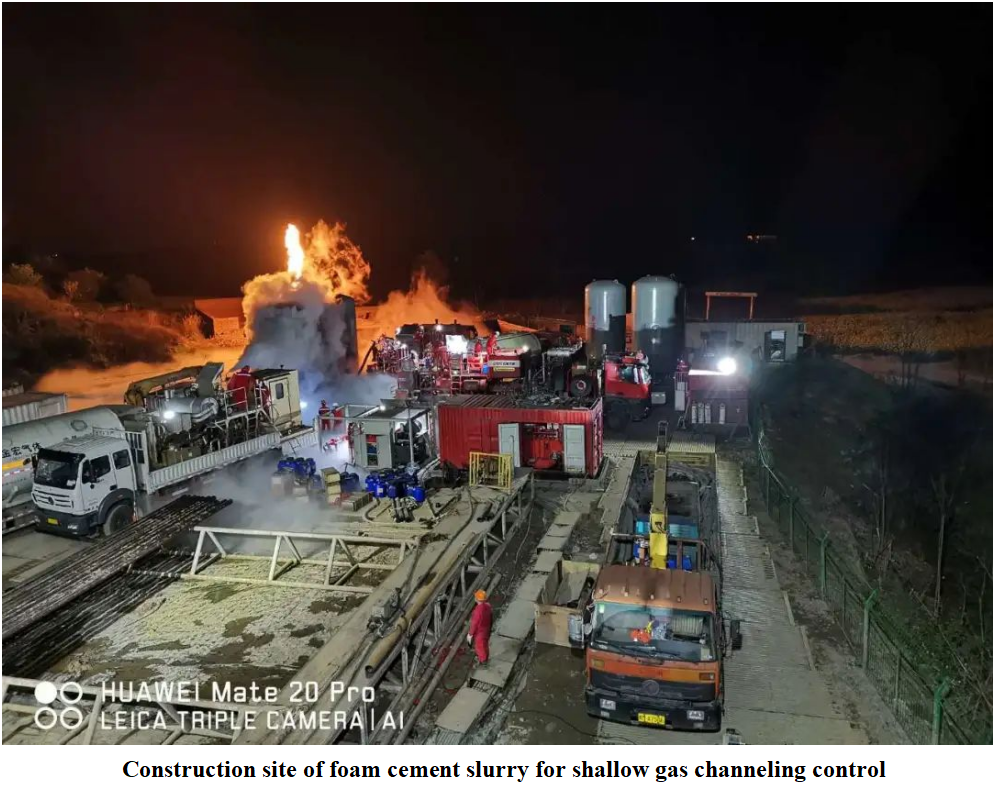Cementing Technology of Foam Cement Slurry
1. Background and Requirements
At present, the continuous breakthroughs in technological bottlenecks such as high temperature and high pressure have driven the transformation of domestic oil and gas exploration and development towards high-quality development. How to efficiently and environmentally develop unconventional (shale, tight sandstone), deep, and ultra-deep oil and gas reservoirs is a research hotspot in the global green and low-carbon transformation trend. At the same time, the exploration and development targets are becoming increasingly complex, and new technologies such as segmented volume fracturing for horizontal wells are constantly developing, posing stricter requirements for cementing quality and sealing integrity.
During the drilling process, low pressure and high permeability formations, loss zones, and shallow fractured formations are often encountered, which can easily cause a series of serious drilling accidents such as lost circulation and kick. The use of underbalanced drilling, air drilling, air/atomization drilling, air/foam drilling and a series of practical drilling technologies can effectively solve the drilling problems in such formations. However, in the subsequent cementing construction, if conventional oil well cement is still used for sealing and cementing construction, it often leads to serious cement slurry leakage and insufficient return depth, making it difficult to ensure the quality of cementing and meet the requirements of subsequent oil and gas perforation, acid fracturing, stimulation, and oil and gas production operations. Therefore, it is urgent to study the problems of cement slurry leakage and insufficient return depth in cementing construction in such formations.
In recent years, the successful practice abroad is to use aerated foam cement slurry for plugging or cementing.
Foam cement slurry is a stable cement slurry system containing "small bubbles" formed by filling the cement slurry with gas (N ₂ or air) and adding auxiliary additives,which has the advantages of low filtration loss, good insulation performance, good stability, easy control of thickening time, and has low pollution and certain plugging performance. The outstanding advantage of "small bubble" cement slurry is that it can still maintain high strength at lower densities.
The shallow gas in the Maokou Formation of the shale gas in Nanchuan is active, and the flame height before cementing in the Dashi 1HF well can sometimes reach over 10 meters. The conventional graded cementing and tail pipe cementing have a long period of pressure and leakage stoppage, which brings great risks to the cementing operation, how to manage shallow gas is the key to ensuring the safe exploration and production of shale gas wells. Cementing with low-density foam cement slurry can effectively solve the cementing problems of low-pressure and leaky wells and long cementing interval wells, and improve the cementing quality and wellbore stability.
As the main battlefield for increasing storage and production at Northeast Oil and Gas Company, Longfengshan Gas Field belongs to a typical fractured reservoir with prominent problems such as "upper collapse and lower leakage". The leakage rate is high, and the bottom hole temperature exceeds 120 ℃.According to statistics, 11 out of 14 wells in the basic volcanic rock of North 213 have leakage, and the average loss period before cementing is 14 days after only dealing with pressure blocking. So far, there is no reported precedent of foam cement slurry cementing operation at over 120 ℃. How to resist the temperature of "small bubbles" and the high temperature stability of foam cement slurry above 120 ℃ are recognized as world-class problems.
2. Breakthrough and Innovation
In response to the technical challenges of Sinopec's high temperature deep well cementing loss, long pressure plugging cycles, and inability to withstand high temperatures, the foam cementing technology innovation team of the Engineering Institute has broken through the world-class problem of high-temperature stability of foam cement slurry and developed a high-temperature resistant foam cement slurry system relying on the continuous tackling of national projects, projects of the Ministry of Science and Technology of Sinopec and Beijing projects; They put forward the foam cement slurry cementing method without lifting the pressure bearing long sealing section, which avoided the pressure bearing plugging operation; They have formed the high-temperature deep well foam cement slurry cementing process technology with independent intellectual property rights, which ensures that the one-time injection of foam cement slurry returns to the ground, simplifies the drilling and completion procedures, and reaches the international leading level in terms of foam cement slurry system temperature resistance, equipment integration and field application indicators, helping Sinopec become the first domestic and second global unit to fully master the core technology.
During the epidemic in 2020, the foam cementing technology innovation team of the Engineering Institute responded to the call for action of "100 days hard working and efficiency creation", stuck to the front line, and promoted and applied more than 25 wells in Sinopec Northeast Oil and Gas Branch, with remarkable achievements in quality improvement and efficiency increase.
In Well Nothern No. 5, the maximum depth of one-time cementing with foam cement slurry is 5530m, the maximum temperature is 150 ℃, and the excellent cementing rate is more than 90%; In the North 210-1 well and the Yaoping 21 well, they successively achieved 1.10g/cm ³ And 0.70g/cm ³ Sinopec has recorded the lowest cementing density, saving over 300 days of drilling and completion cycles and over 50 million yuan in costs. This has made outstanding contributions to the "Four Improvements" work and effectively supported efficient exploration and development in key areas of Sinopec.

Faced with high-risk operations such as narrow safety density window of drilling fluid, active gas reservoir and ignition in Maokou Formation of Nanchuan Shale Gas Field, the foam cementing technology innovation team proposed a new cementing process of "micro foam cement slurry channeling prevention and dynamic pressure control and stability", which controlled and extinguished the flame, successfully achieved pressure stabilization of the gas layer, ensured the normal return of cement slurry, and ensured the sealing and safety production of a series of shallow gas wells such as Dashi 1-1HF.

After ten years of hard work, the foam cement slurry cementing technology and equipment of the Institute of Engineering has come to the forefront of the world in 2020, and the domestic foam cement slurry cementing market share is 100%. The nitrogen injection foam integrated equipment independently developed has successfully achieved technical licensing, and Siji Saiwa Petroleum Drilling and Production Equipment Co., Ltd. has been authorized to manufacture commercially, opening a new chapter for the commercialization of foam cementing equipment and technology in China.
3. Development and Prospects
Deep, ultra deep and unconventional fields will be the main battlefields for oil and gas exploration and development in the future, and the demand for foam cement slurry cementing for leakage prevention and channeling prevention will increase day by day.
During the 14th Five Year Plan period, the Engineering Institute will strengthen technological leadership, increase research on high-temperature deep well cementing technology, and promote the transformation of China's cementing technology and equipment towards digitization and intelligence; Meanwhile, we are advancing into the fields of heavy oil thermal recovery wells, dry hot rock well insulation and cementing, "solving big problems with small bubbles", assisting in the construction of world leading research institutes, and making new and greater contributions to building a world leading clean energy chemical company for Sinopec!
